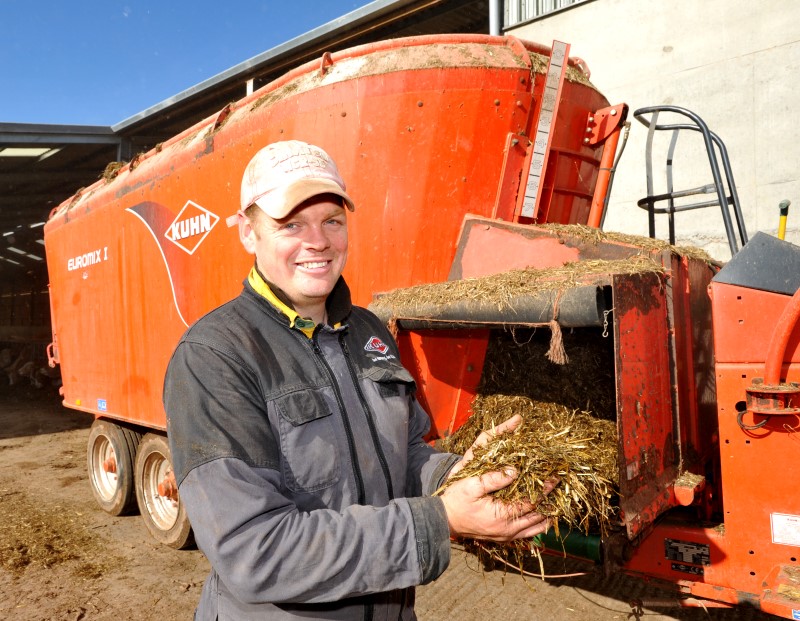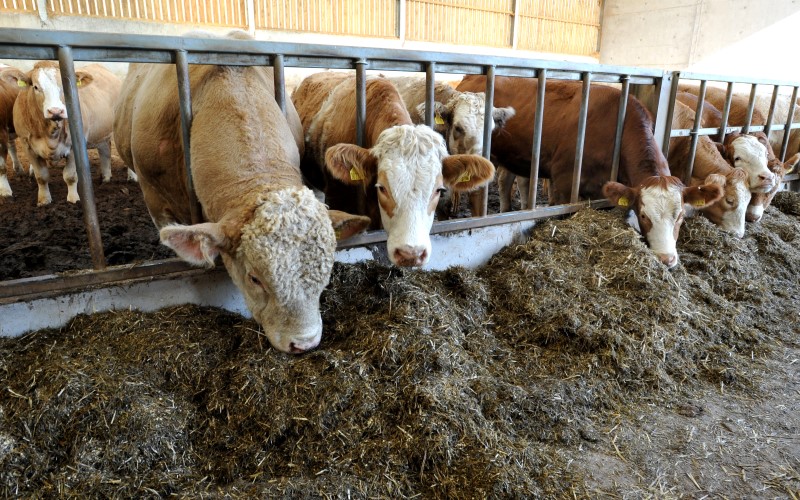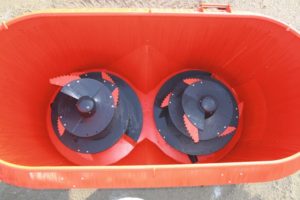Straw in the Mix
1st August 2022

All in the mix, Farmer Matt Cleland with his Kuhn Euromix diet feeder, at Glebe Farm, Dinedor, near Holme Lacey, in Herefordshire. Photo Chas Breton.
Investing in a diet feeder with the capability of chopping and incorporating significant quantities of straw into suckler cow rations is described by Matt Cleland as the most notable change made on his family’s beef unit in the last five years. The 340-cow unit, based at Glebe Farm near Holme Lacy, Herefordshire, had traditionally maintained its spring calving suckler herd on grass silage, feeding what Matt describes as ‘scary’ levels of forage.
“Even though the aim with suckler cows is generally to restrict feeding – the opposite to dairy cows – we used to get through an enormous amount of clamped and round bale silage,” he recalls. The decision to introduce straw was subsequently an easy one, particularly considering the business runs around 182ha (450 acres) of arable alongside the sucklers and therefore has easy access to straw.
Matt adds: “We now include 4.5kg/head/day with the grass silage in the suckler cow’s winter ration. Overall, by looking at the grass acres required per cow, we’ve probably reduced the cost of keeping cows by half. We are also maintaining the cows in more of an optimum condition and have seen fewer calving problems as a result.”

Happy customers, cattle feed in the sheds at Glebe Farm, Dinedor, near Holme Lacey, in Herefordshire. Photo Chas Breton.
Effective incorporation of straw with grass silage is essential, which is where the Kuhn Euromix 2280 diet feeder plays its part. Bought five years ago, this twin vertical auger machine with a 22 cubic metre capacity hopper will take large square straw bales (125cm x 90cm) and chop and mix these with round bale silage efficiently and effectively. “We use wheat straw for feeding and aim to chop it down to around three inches,” says Matt. “It takes about 20 minutes to mix a load that will feed 180 – 200 cows. There’s usually enough time to do the bedding down whilst a load is mixing, so the whole operation is pretty efficient.”
With all cattle taken through to finish or reared as replacements for what is a closed herd, the Euromix is kept busy at Glebe Farm for three to four hours a day during the busiest periods. Finishing bulls, steers and heifers are all reared indoors on rations comprising of homegrown rolled wheat and barley, homegrown beans, fodder beet, distiller’s grains and bought-in protein blend. In the past year the unit has finished over 100 bulls at an average 410kg carcass weight, although the aim is to finish bulls lighter to meet current market specifications. Heifers typically reach 330-360kg dcw in 16-17 months.
Fibre chopping efficiency
Maintaining the diet feeder is a must-do job, according to Matt Cleland, who says the most important aspect is to change the knives in good time.
“We have changed the knives every other season since we’ve had the Euromix,” he says. “If for any reason we are late doing this, we’ll soon be reminded by the extra time it’s taking to chop and mix the rations. It’s not a cheap exercise, but it’s money well spent when you look at the extra time and diesel it takes when the knives are worn.”
Kuhn has designed the Euromix with long fibre chopping as a priority, including a number of features in the design of augers and hopper that enhance chopping and mixing efficiency.